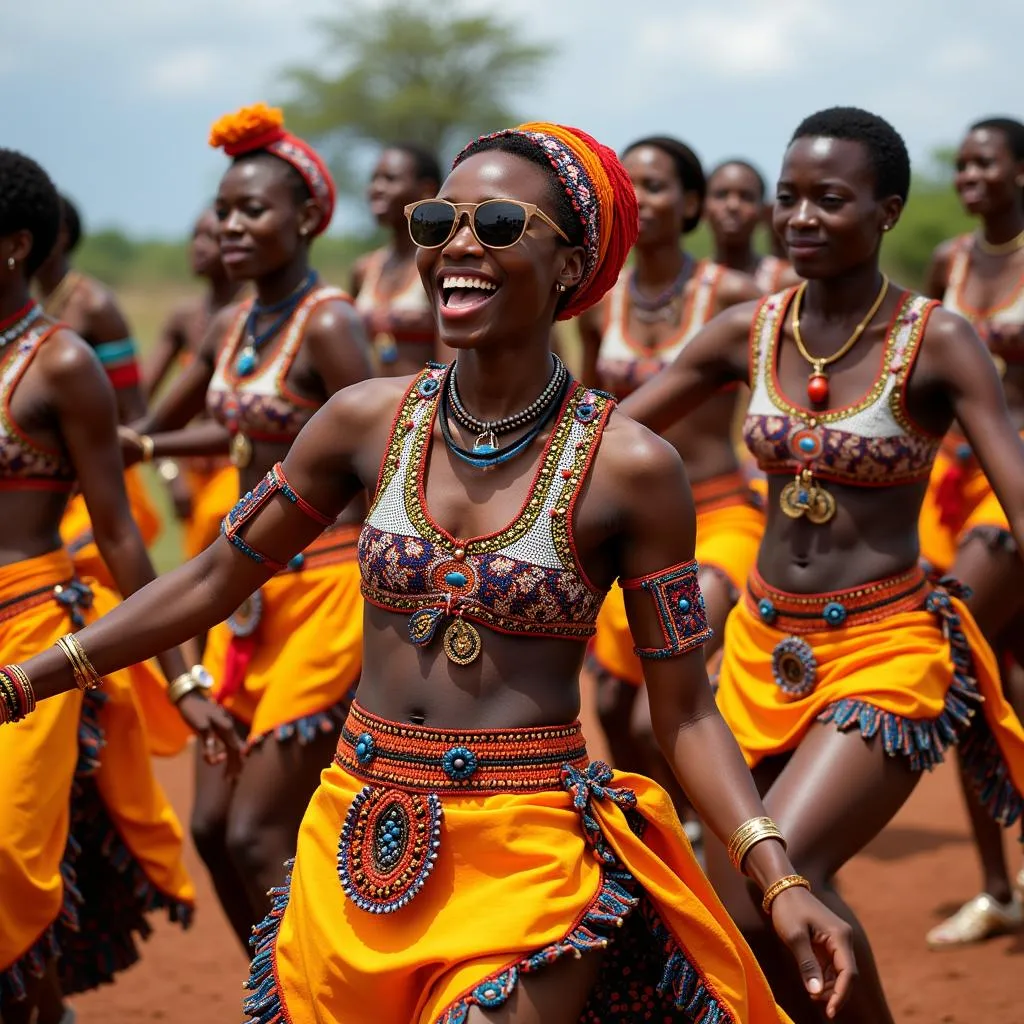Exploring the African Country of Eritrea: History, Culture, and More
Nestled along the Red Sea, Eritrea is a country in the Horn of Africa with a rich history and vibrant culture. Known as the “Land of Three Hundred Suns” due to its sunny climate, Eritrea offers a unique blend of ancient traditions and modern influences. This article delves into the captivating story of Eritrea, from its ancient origins to its present-day challenges and triumphs.
A Journey Through Time: Eritrea’s Ancient Past
Eritrea’s history stretches back millennia, with evidence of human settlements dating back to the Stone Age. The country played a pivotal role in ancient trade routes connecting Africa, Asia, and Europe. It was home to the Kingdom of Aksum, a powerful empire that flourished from the 1st to the 8th centuries CE. The Aksumites were known for their impressive architecture, advanced trade networks, and unique language and script. They were one of the first civilizations to adopt Christianity, leaving behind a legacy of churches and monasteries carved into sheer cliff faces.
The Struggle for Independence and its Aftermath
Eritrea’s strategic location on the Red Sea made it a target for colonization. After being ruled by the Ottoman Empire and later by Italy, Eritrea was incorporated into Ethiopia in 1962, sparking a three-decade-long struggle for independence. The Eritrean people’s unwavering determination led them to victory in 1991, marking the birth of a new nation.
A Mosaic of Cultures: Eritrea’s Diverse Heritage
Eritrea is home to nine distinct ethnic groups, each with its unique traditions, languages, and cultural expressions. This cultural tapestry is woven together by shared historical experiences and a strong sense of national identity. Tigrinya and Tigre are the most widely spoken languages, alongside Arabic, English, and other indigenous languages.
From Coastal Plains to Rugged Mountains: Eritrea’s Diverse Landscapes
Eritrea’s landscape is as diverse as its people. Along the Red Sea coast, you’ll find stunning coral reefs, pristine beaches, and bustling port cities like Massawa. Moving inland, the landscape transforms into fertile highlands, where coffee plantations thrive amidst rolling hills. Further south, the Danakil Depression, one of the hottest and lowest places on Earth, presents a surreal landscape of salt flats, volcanoes, and geothermal wonders.
Eritrea Today: Challenges and Opportunities
Eritrea faces significant challenges, including poverty, limited infrastructure, and political restrictions. However, the country is also making strides in areas like education, healthcare, and renewable energy. Eritrea’s young population, coupled with its untapped natural resources, holds the potential for a brighter future.
Experiencing Eritrea: A Journey of Discovery
For intrepid travelers seeking off-the-beaten-path destinations, Eritrea offers a chance to experience a unique blend of history, culture, and natural beauty. Explore the ancient ruins of Aksum, dive into the vibrant underwater world of the Red Sea, or trek through the breathtaking landscapes of the highlands. Immerse yourself in the local culture, savor the flavors of Eritrean cuisine, and witness the resilience and warmth of the Eritrean people.
Conclusion
Eritrea, though a relatively new nation, boasts an ancient past and a vibrant present. From its historical significance to its diverse cultural expressions and breathtaking landscapes, this African country offers a unique travel experience. As Eritrea continues to navigate the challenges and embrace its potential, it remains a land of resilience, beauty, and boundless possibilities. If you are looking for more information about other African countries, check out our articles about African countries beginning with e and African countries capital currency and language.
FAQs about Eritrea
1. What is the capital of Eritrea?
The capital of Eritrea is Asmara, known for its Italian colonial-era architecture.
2. What currency is used in Eritrea?
The official currency of Eritrea is the Nakfa.
3. What are some must-visit attractions in Eritrea?
Some must-visit attractions include the ancient city of Aksum, the Dahlak Archipelago, the Qohaito cultural landscape, and the Asmara Opera House.
4. What is the best time to visit Eritrea?
The best time to visit Eritrea is during the cooler and drier months from October to March.
5. Is it safe to travel to Eritrea?
Travel to Eritrea requires careful planning and consideration of safety recommendations. It is advisable to check travel advisories and consult with experienced travel operators.
Do you have any other questions about Eritrea or other African countries?
Explore our other informative articles on topics such as the AFINDEX and the African countries participating and African countries and their official languages. For a fun and quick overview of African countries, check out our 40 African Countries in 5 Minutes Buzzfeed article.
Need assistance planning your trip to Africa? Contact our dedicated customer support team 24/7 via phone: +255768904061, email: kaka.mag@gmail.com, or visit our office located at: Mbarali DC Mawindi, Kangaga, Tanzania. We’re here to help you explore the wonders of Africa!
